Abstract
1. Soleus muscle in the decerebrate cat was stretched sinusoidally through various distances, at various frequencies while tension and e.m.g. activity were recorded.
2. Two patterns of stretch reflex activity were seen. In one, slow stretching led to a large increase in tension, whereas in the other tension increased little during slow stretching, but rose steeply during a more rapid stretch. Intermediate states were also seen.
3. Both these reflex patterns were abolished when the fusimotor fibres were blocked with Xylocaine.
4. At low frequencies of stretching the e.m.g. activity was greatest at peak muscle length; at higher frequencies the greatest activity was found during lengthening. This angular advance of e.m.g. activity on length was greatest at 3·3-5 c/s. At the higher frequencies the e.m.g. activity was less in advance of muscle length.
5. Angular advance of e.m.g. activity was greatest in the preparations that were also the most sensitive to slow stretching.
6. Muscle contraction follows an electrical stimulus with a small delay. The delay between the end of stimulation and the end of muscle relaxation is longer, and may exceed 200 msec in cat soleus.
7. The timing of the reflex tension during sinusoidal stretching depended on how far the angular advance of the e.m.g. combined with the damping properties of muscle offset the time delays in the reflex pathway.
8. Changes in muscle tension generally preceded changes in muscle length. When, however, stretch amplitudes of 1 mm (peak to peak) were used, a phase delay of tension was sometimes seen. This only occurred in preparations that also showed little sensitivity to slow stretching.
9. Phase delay of tension was usually found with frequencies of approximately 6-8 c/s, and this corresponds to the clonus frequency for soleus.
10. The mechanisms of the two types of reflex behaviour, and the damping properties of the system are discussed.
Full text
PDF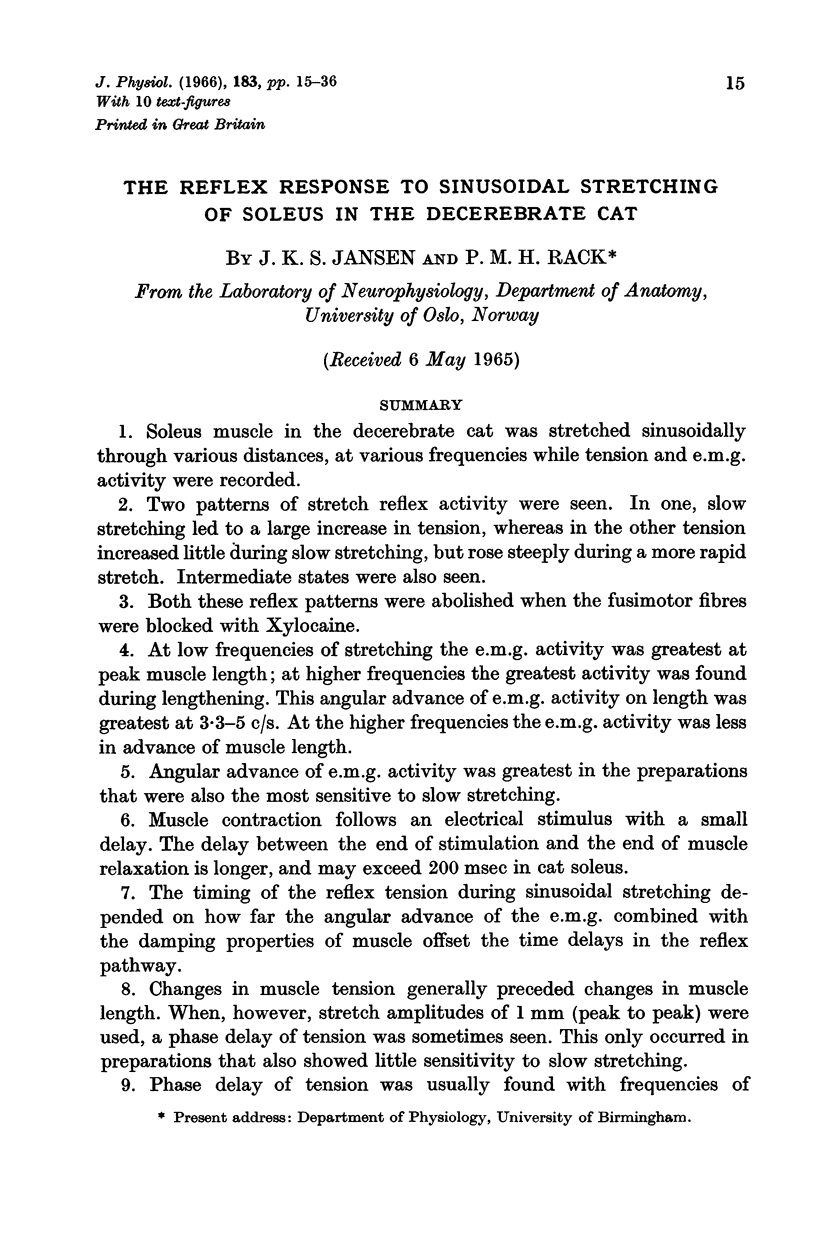
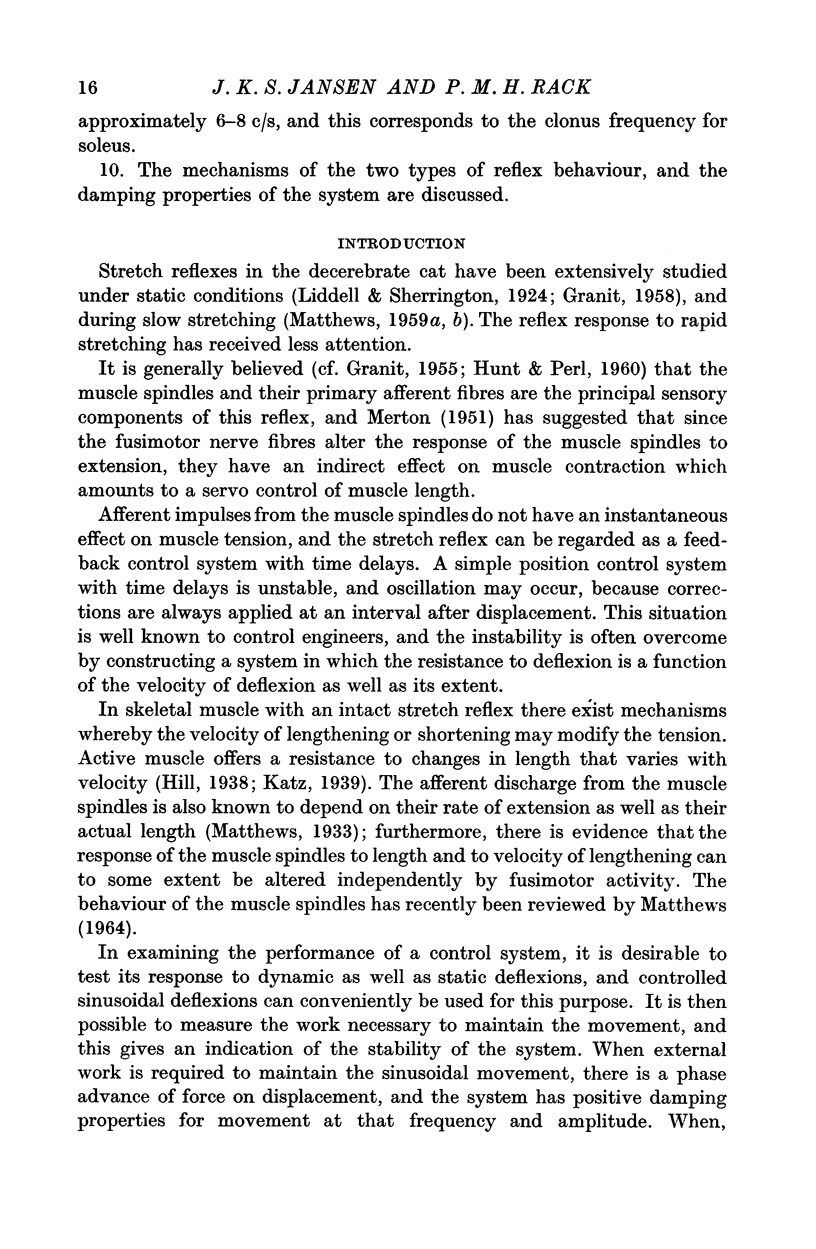
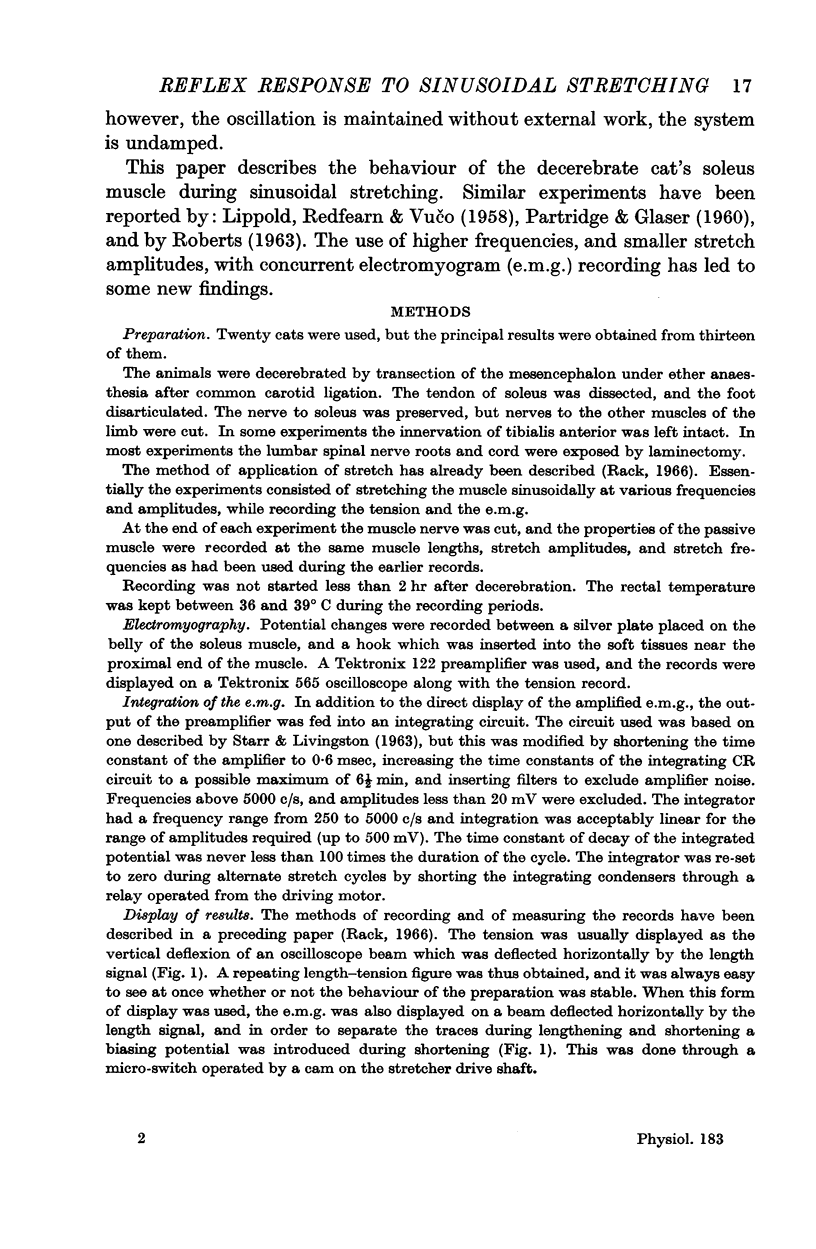

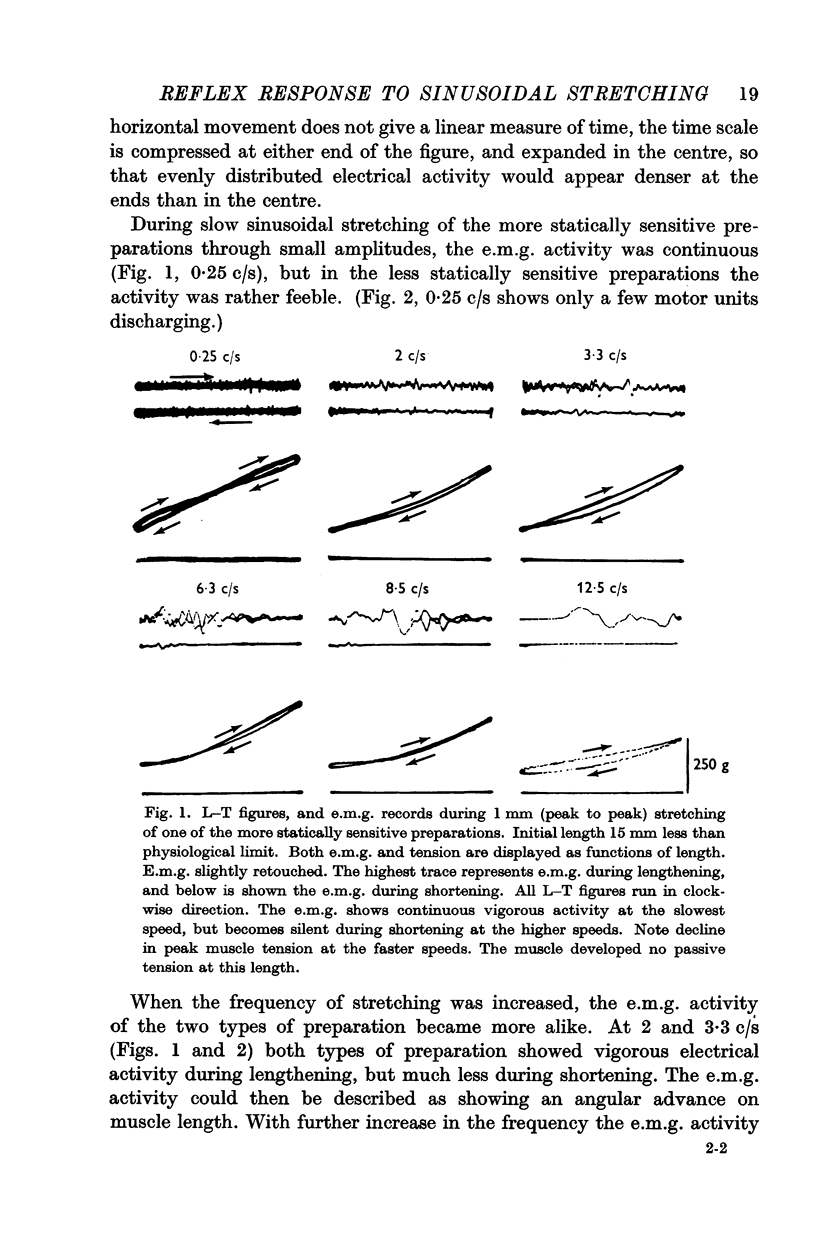
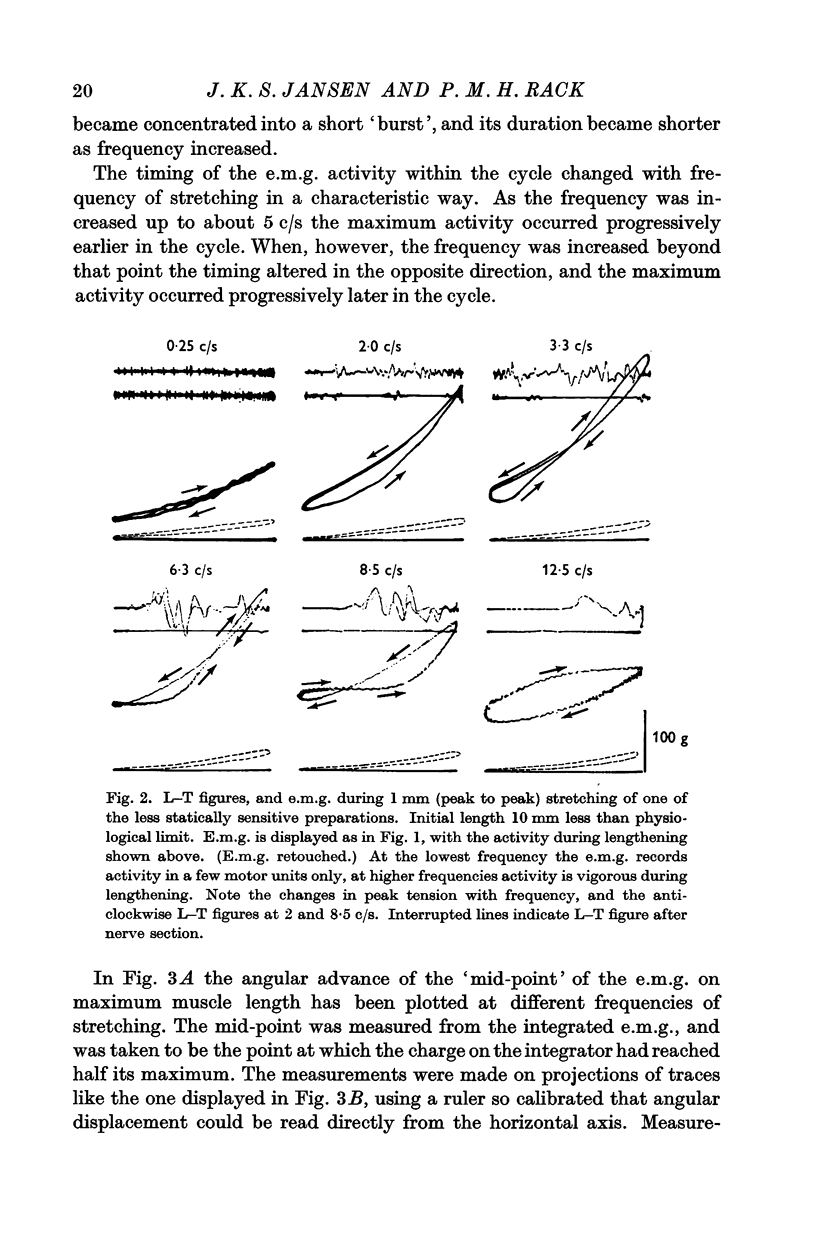
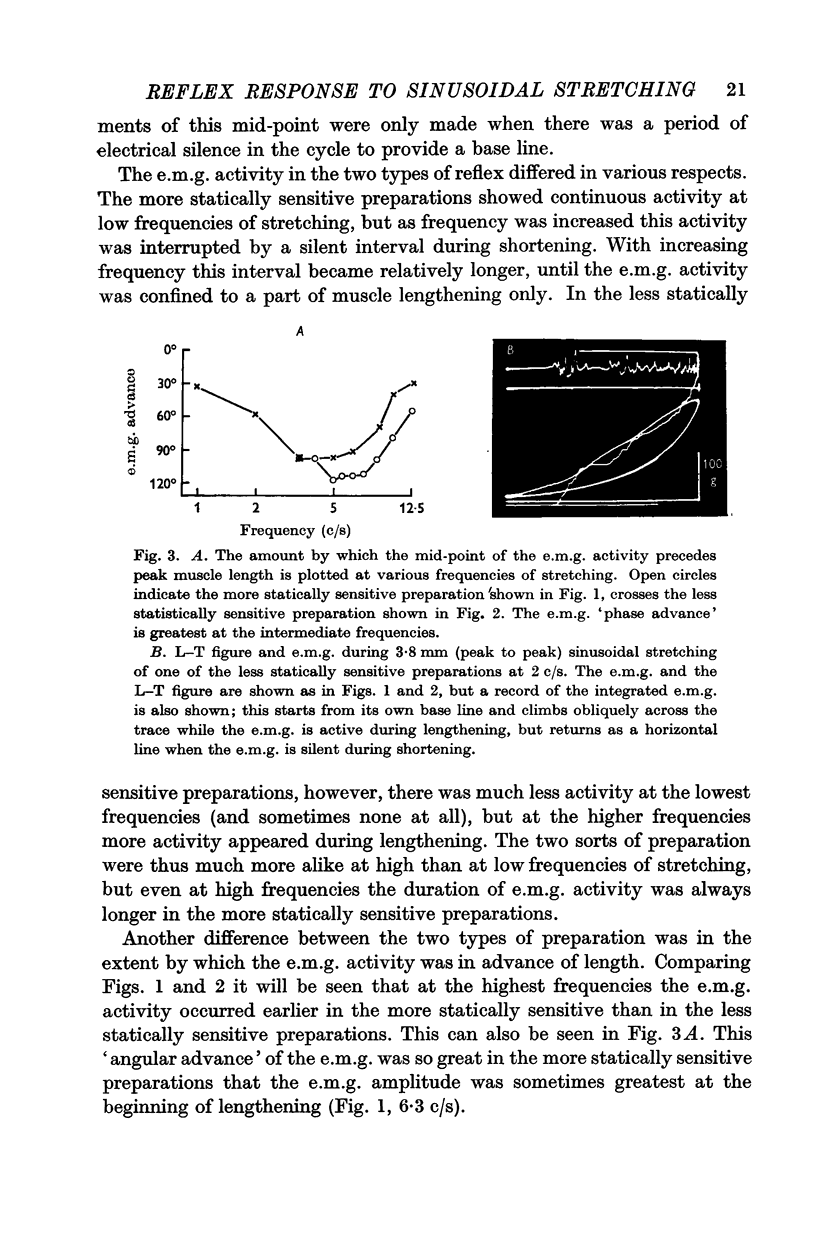
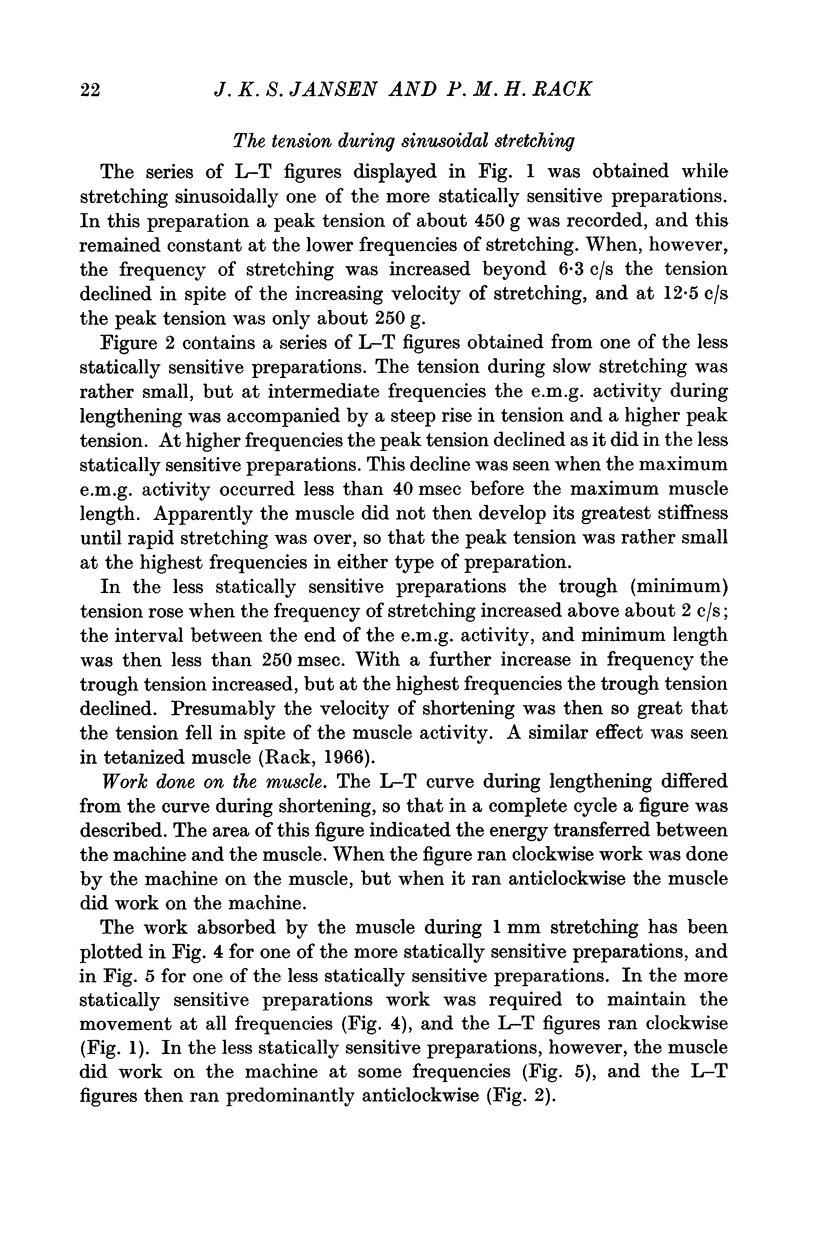
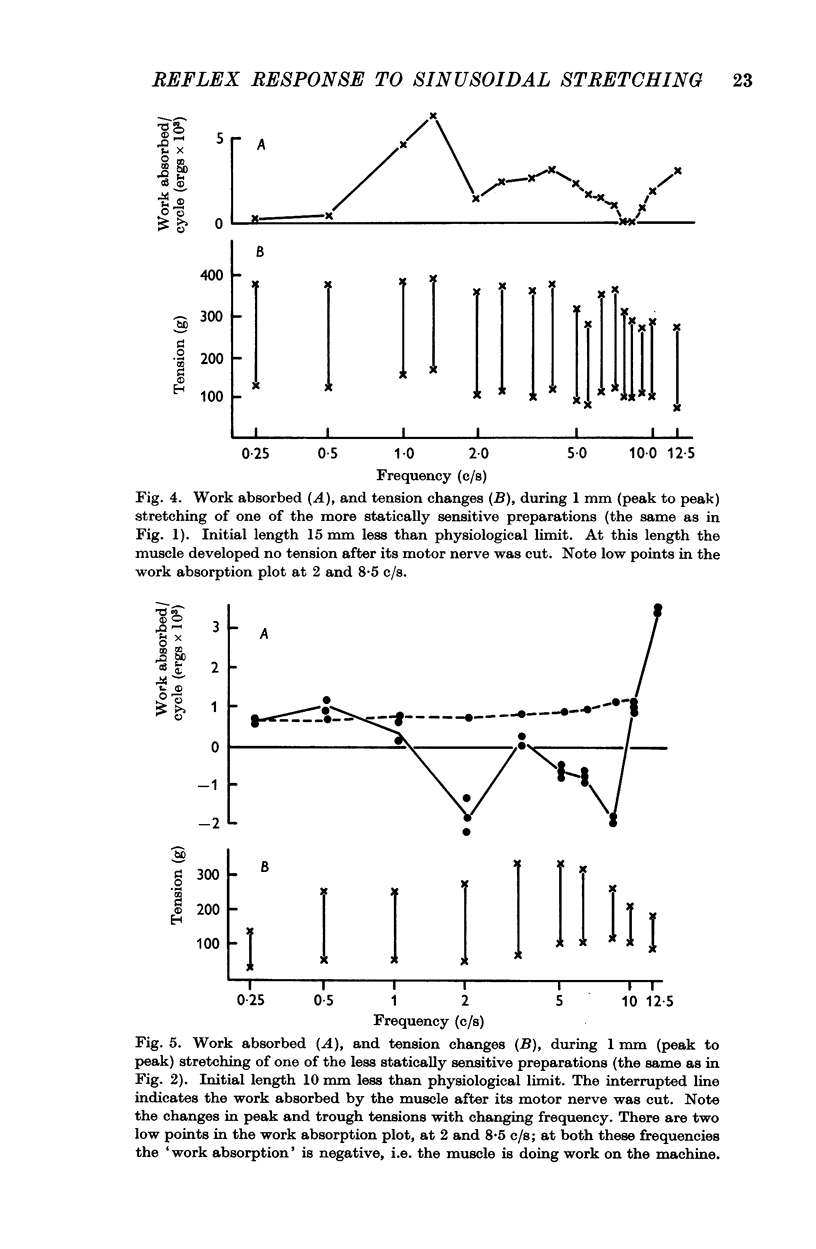
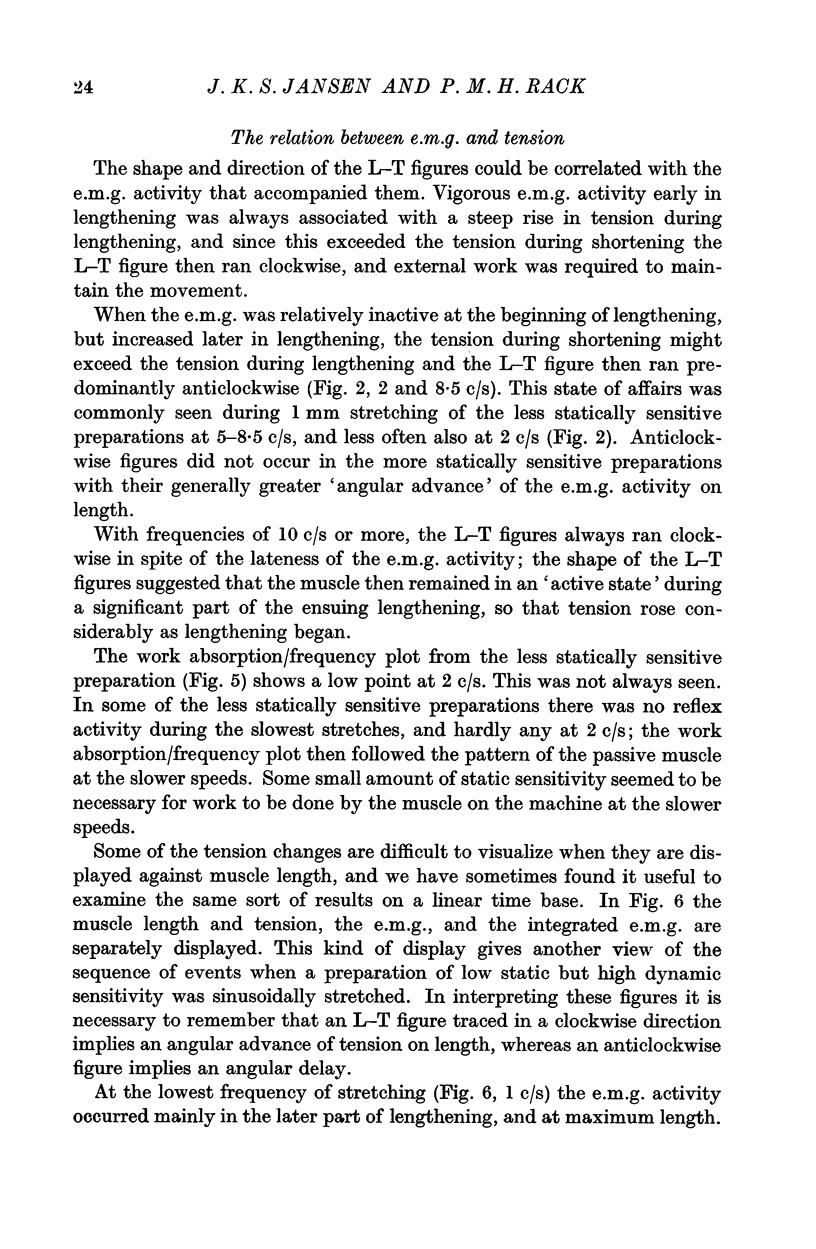

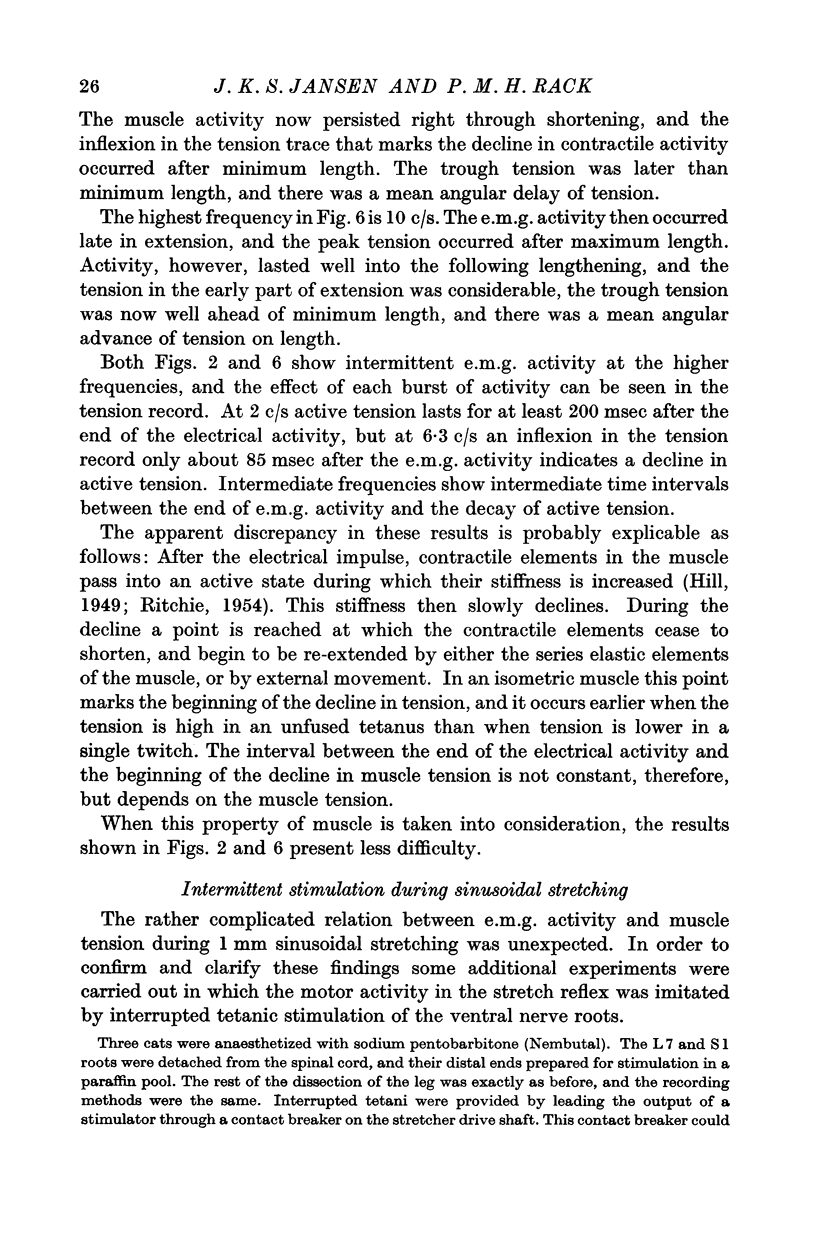
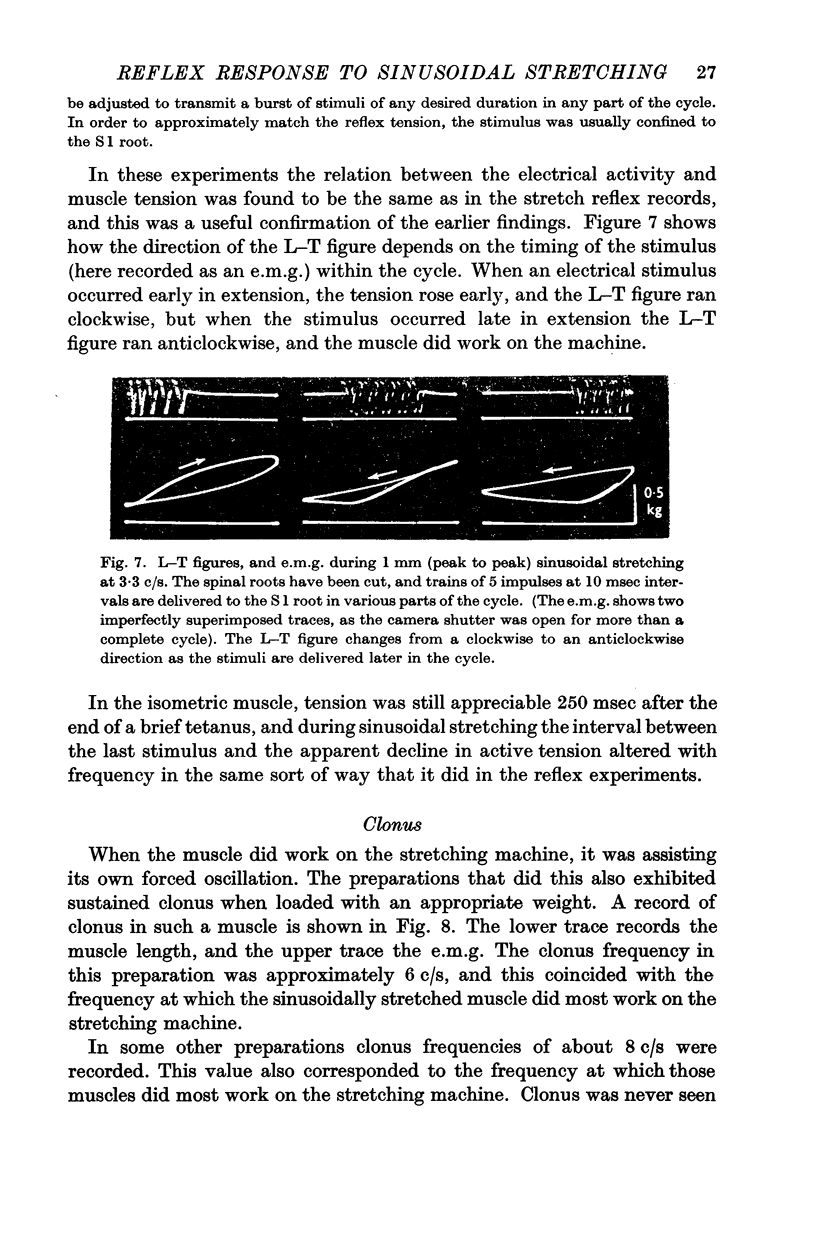
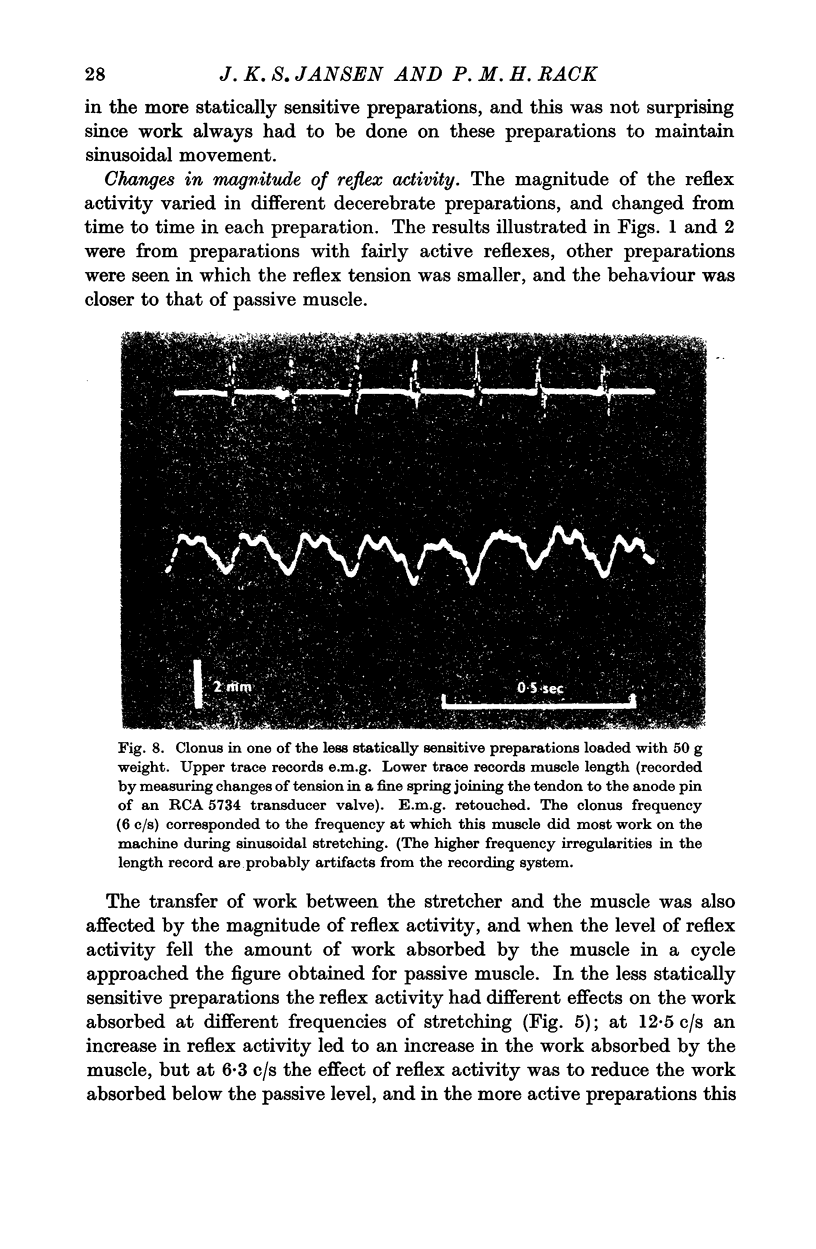
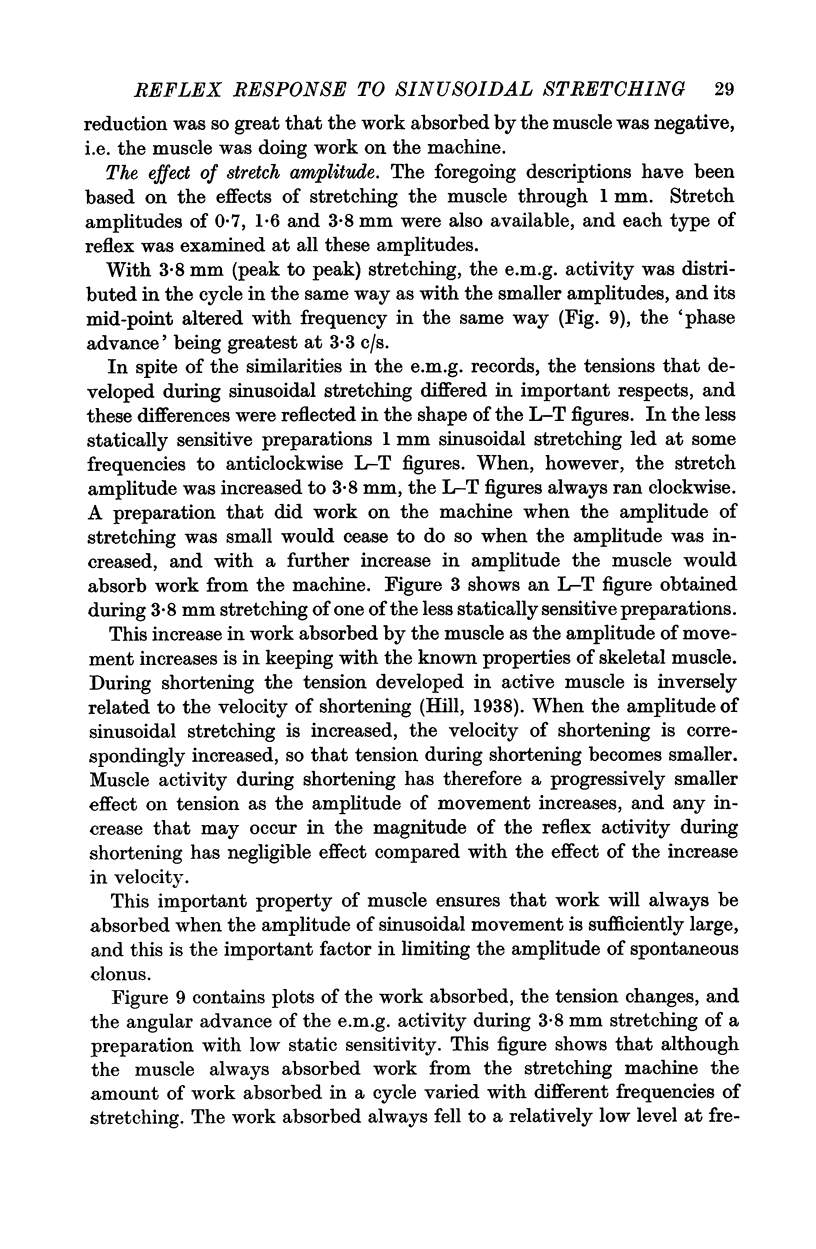
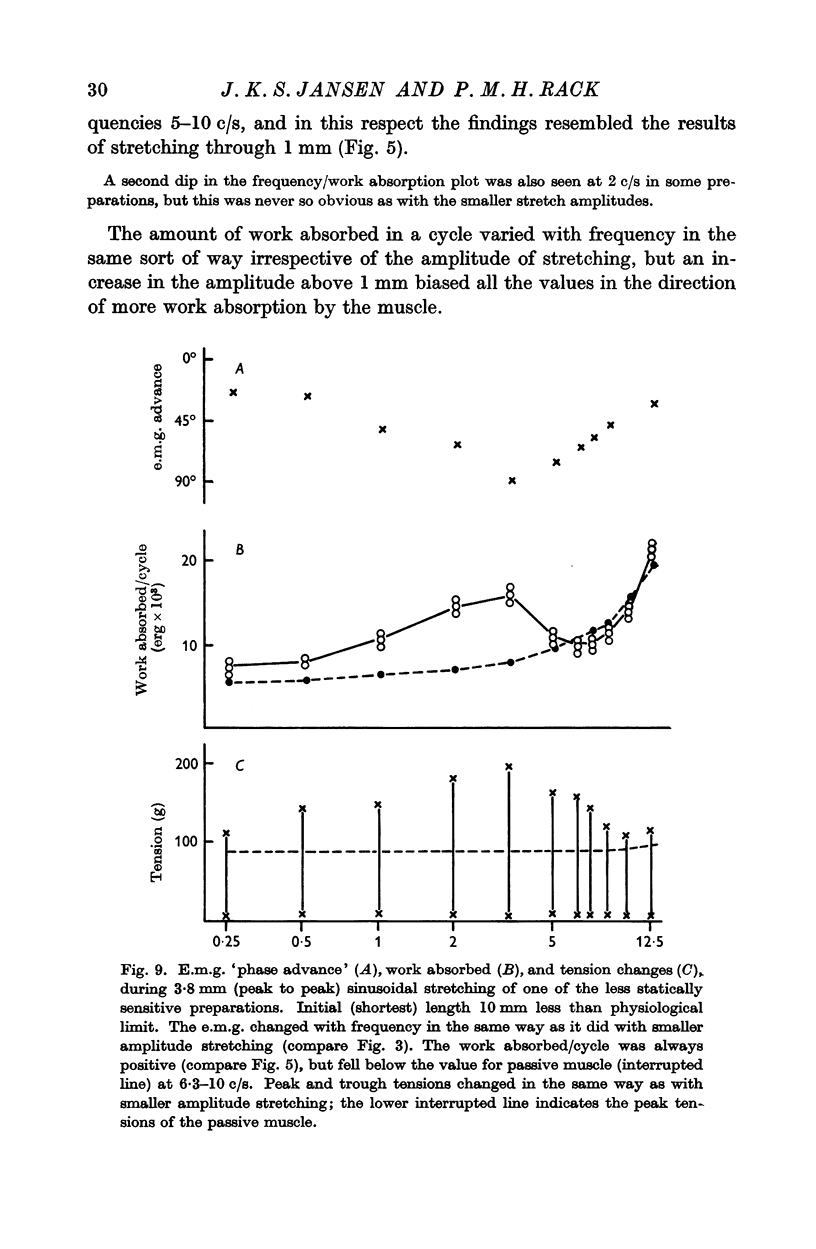
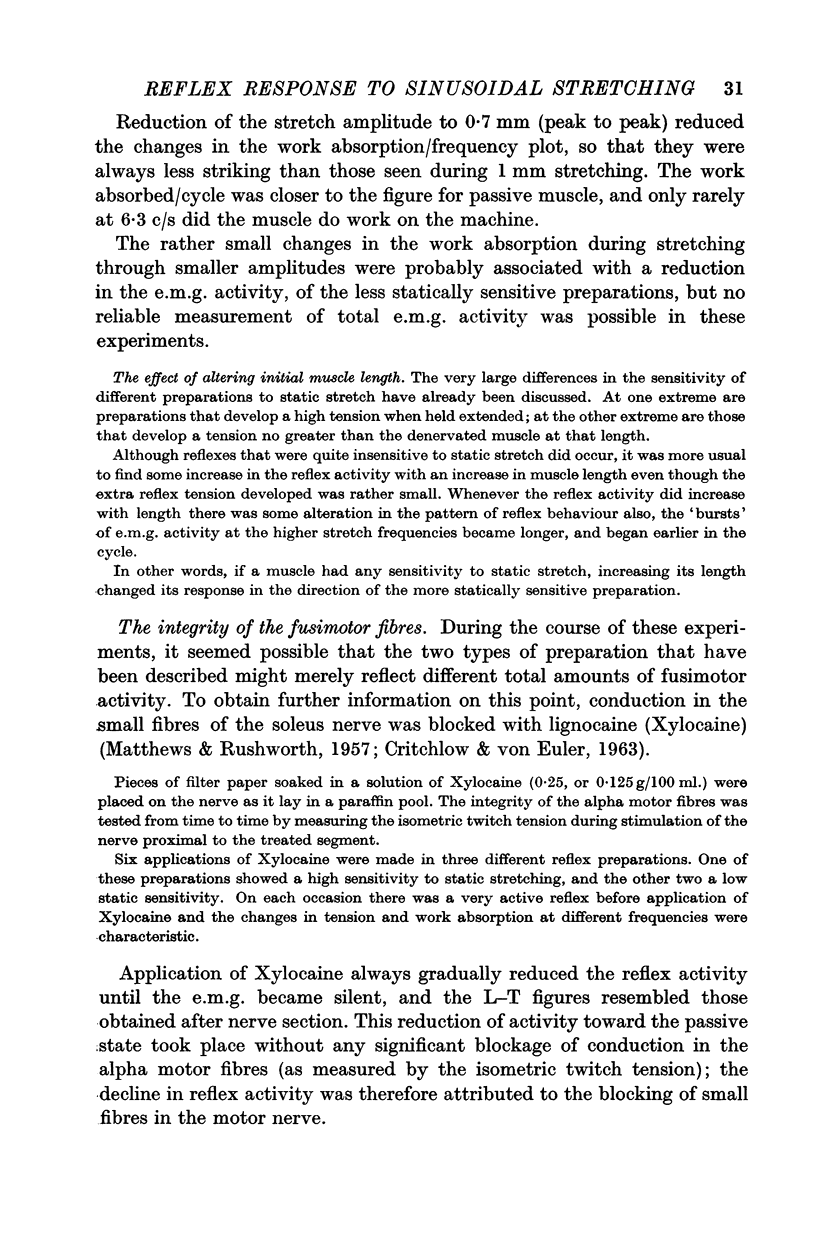
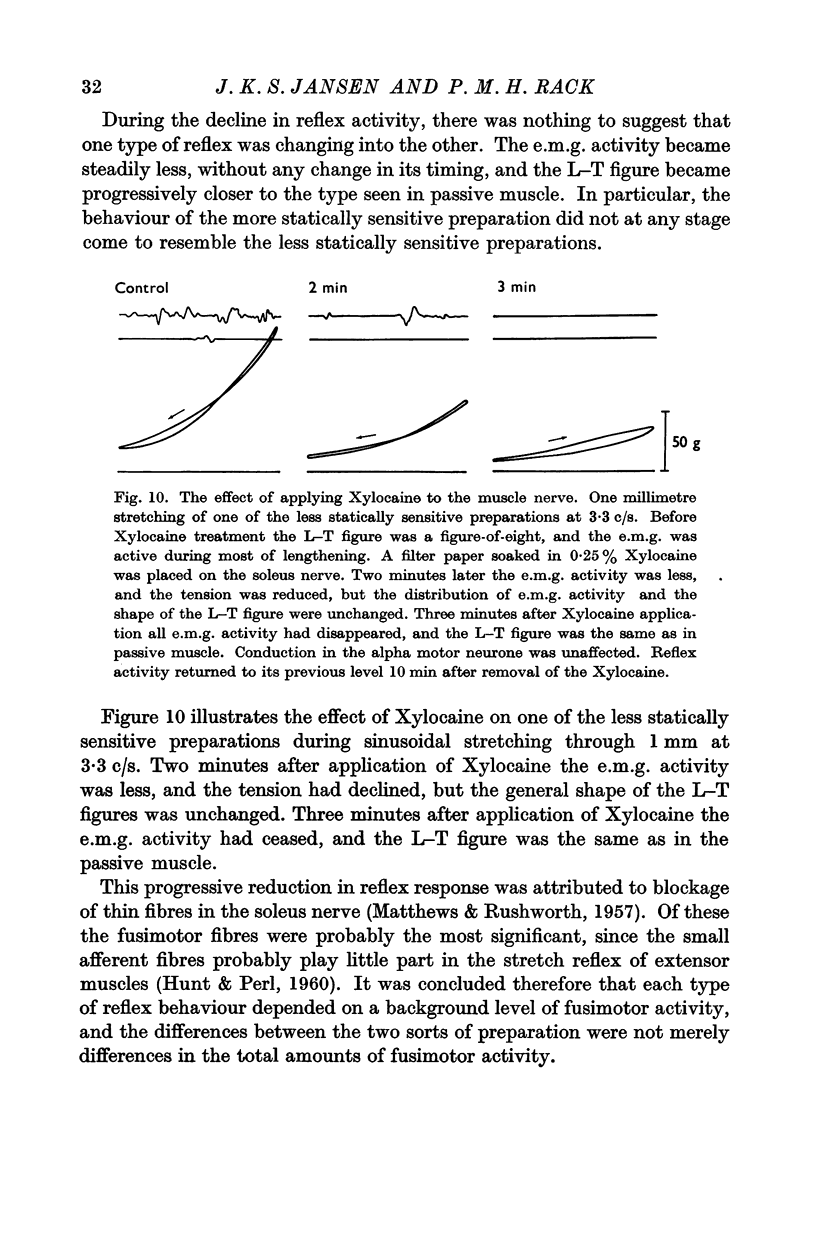
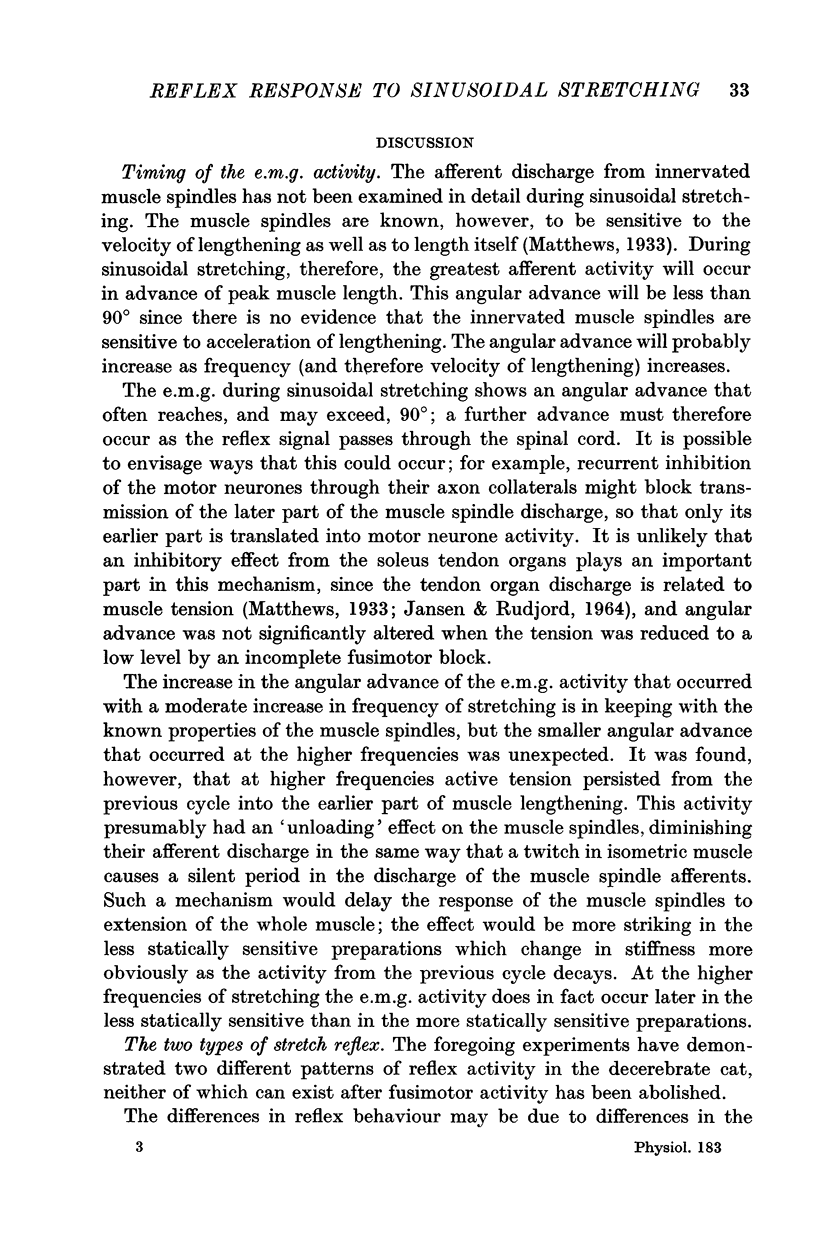
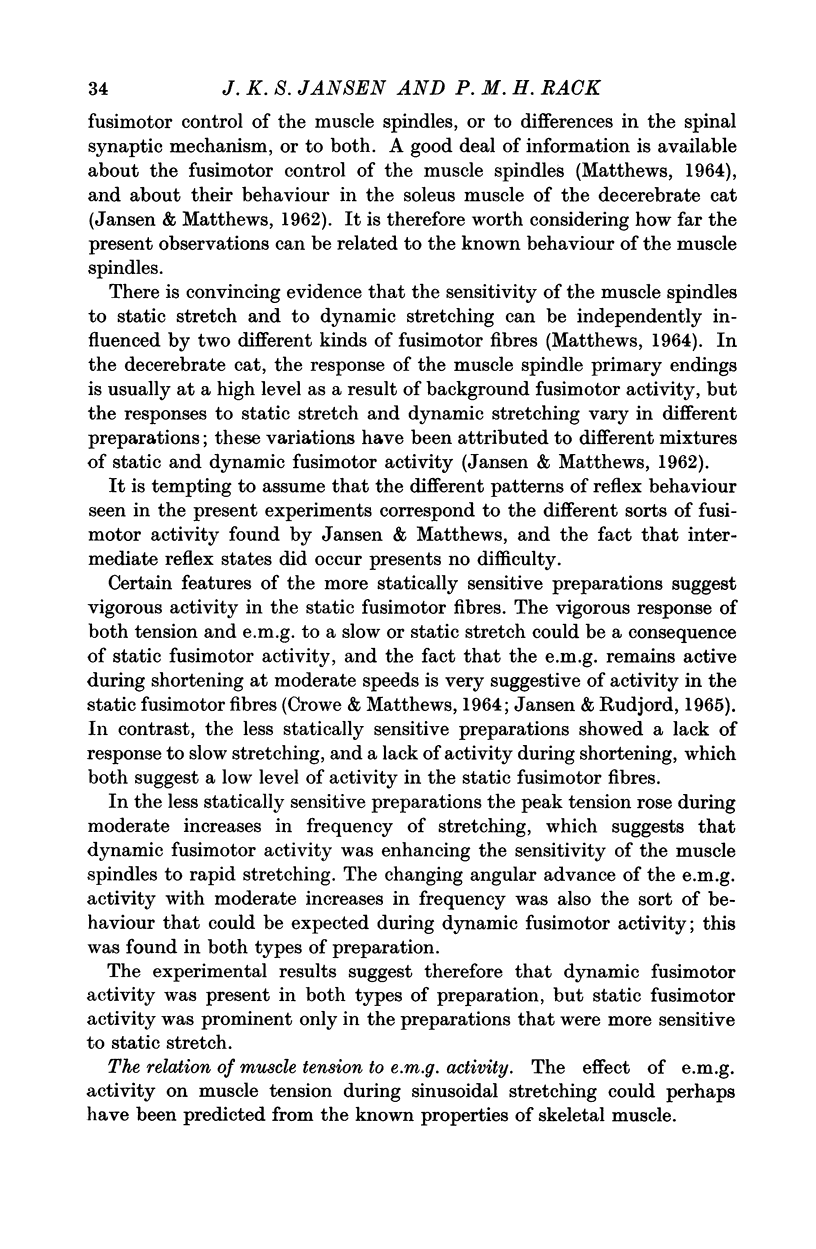
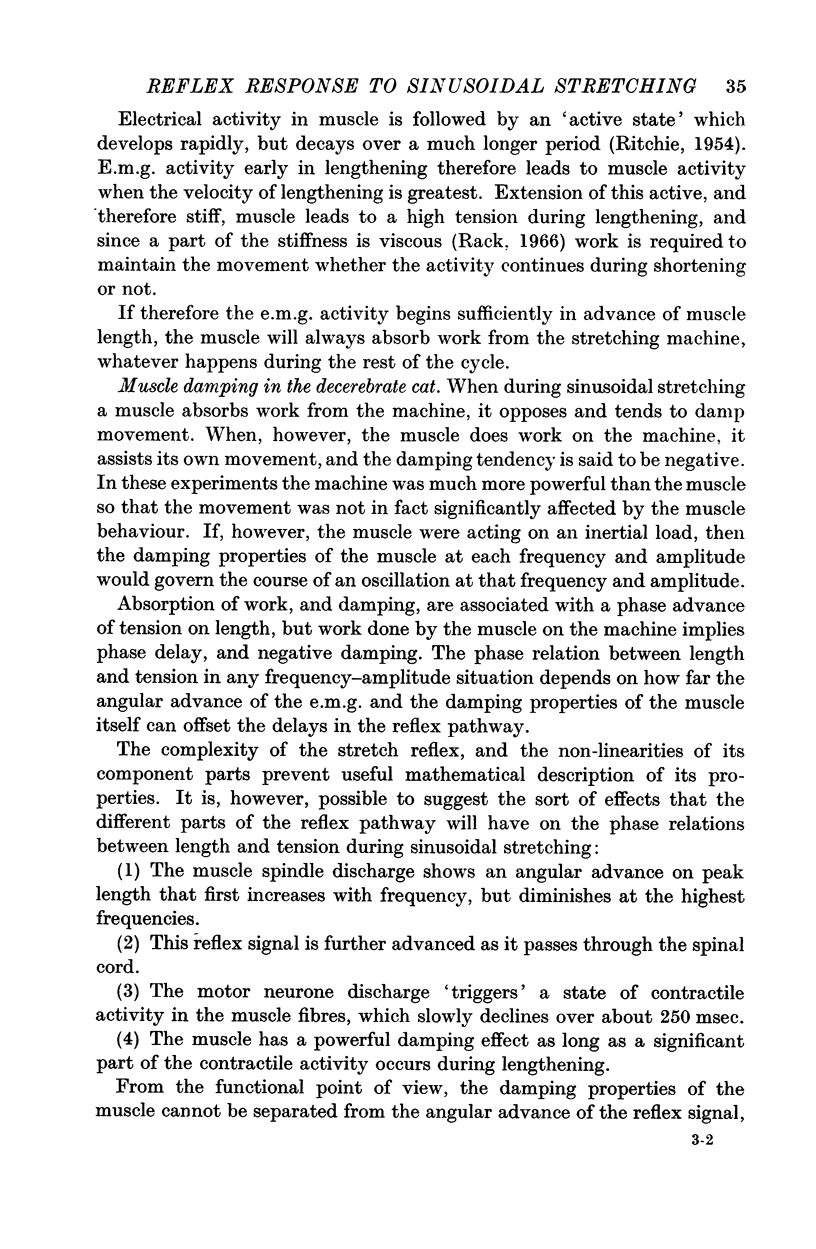
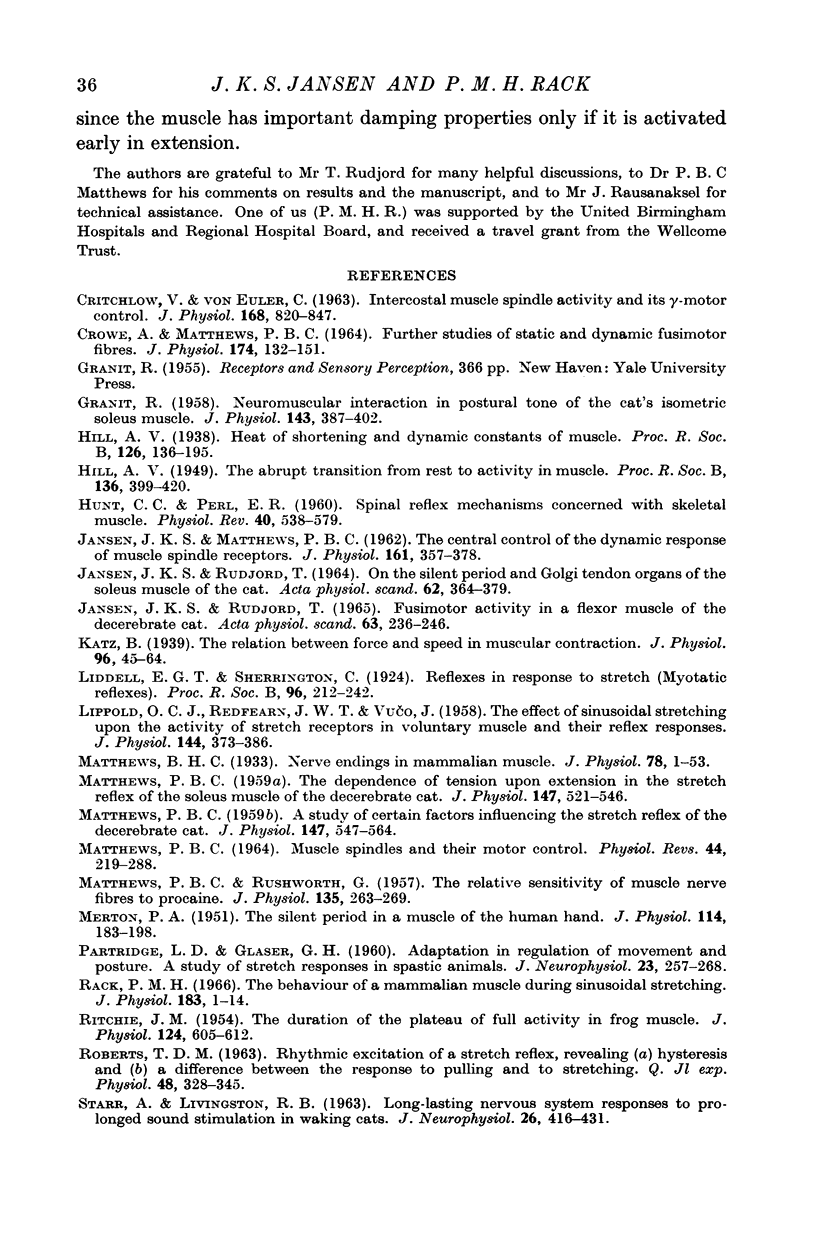
Selected References
These references are in PubMed. This may not be the complete list of references from this article.
- CRITCHLOW V., VON EULER INTERCOSTAL MUSCLE SPINDLE ACTIVITY AND ITS GAMMA MOTOR CONTROL. J Physiol. 1963 Oct;168:820–847. doi: 10.1113/jphysiol.1963.sp007225. [DOI] [PMC free article] [PubMed] [Google Scholar]
- CROWE A., MATTHEWS P. B. FURTHER STUDIES OF STATIC AND DYNAMIC FUSIMOTOR FIBRES. J Physiol. 1964 Oct;174:132–151. doi: 10.1113/jphysiol.1964.sp007477. [DOI] [PMC free article] [PubMed] [Google Scholar]
- GRANIT R. Neuromuscular interaction in postural tone of the cat's isometric soleus muscle. J Physiol. 1958 Oct 31;143(3):387–402. doi: 10.1113/jphysiol.1958.sp006067. [DOI] [PMC free article] [PubMed] [Google Scholar]
- HUNT C. C., PERL E. R. Spinal reflex mechanisms concerned with skeletal muscle. Physiol Rev. 1960 Jul;40:538–579. doi: 10.1152/physrev.1960.40.3.538. [DOI] [PubMed] [Google Scholar]
- JANSEN J. K., MATTHEWS P. B. The central control of the dynamic response of muscle spindle receptors. J Physiol. 1962 May;161:357–378. doi: 10.1113/jphysiol.1962.sp006892. [DOI] [PMC free article] [PubMed] [Google Scholar]
- JANSEN J. K., RUDJORD T. FUSIMOTOR ACTIVITY IN A FLEXOR MUSCLE OF THE DECEREBRATE CAT. Acta Physiol Scand. 1965 Mar;63:236–246. doi: 10.1111/j.1748-1716.1965.tb04063.x. [DOI] [PubMed] [Google Scholar]
- JANSEN J. K., RUDJORD T. ON THE SILENT PERIOD AND GOLGI TENDON ORGANS OF THE SOLEUS MUSCLE OF THE CAT. Acta Physiol Scand. 1964 Dec;62:364–379. doi: 10.1111/j.1748-1716.1964.tb10435.x. [DOI] [PubMed] [Google Scholar]
- Katz B. The relation between force and speed in muscular contraction. J Physiol. 1939 Jun 14;96(1):45–64. doi: 10.1113/jphysiol.1939.sp003756. [DOI] [PMC free article] [PubMed] [Google Scholar]
- LIPPOLD O. C., REDFEARN J. W., VUCO J. The effect of sinusoidal stretching upon the activity of stretch receptors in voluntary muscle and their reflex responses. J Physiol. 1958 Dec 30;144(3):373–386. doi: 10.1113/jphysiol.1958.sp006108. [DOI] [PMC free article] [PubMed] [Google Scholar]
- MATTHEWS P. B. MUSCLE SPINDLES AND THEIR MOTOR CONTROL. Physiol Rev. 1964 Apr;44:219–288. doi: 10.1152/physrev.1964.44.2.219. [DOI] [PubMed] [Google Scholar]
- MATTHEWS P. B., RUSHWORTH G. The relative sensitivity of muscle nerve fibres to procaine. J Physiol. 1957 Feb 15;135(2):263–269. doi: 10.1113/jphysiol.1957.sp005708. [DOI] [PMC free article] [PubMed] [Google Scholar]
- MERTON P. A. The silent period in a muscle of the human hand. J Physiol. 1951 Jun;114(1-2):183–198. doi: 10.1113/jphysiol.1951.sp004610. [DOI] [PMC free article] [PubMed] [Google Scholar]
- Matthews B. H. Nerve endings in mammalian muscle. J Physiol. 1933 Apr 13;78(1):1–53. doi: 10.1113/jphysiol.1933.sp002984. [DOI] [PMC free article] [PubMed] [Google Scholar]
- Matthews P. B. A study of certain factors influencing the stretch reflex of the decerebrate cat. J Physiol. 1959 Oct;147(3):547–564. doi: 10.1113/jphysiol.1959.sp006261. [DOI] [PMC free article] [PubMed] [Google Scholar]
- Matthews P. B. The dependence of tension upon extension in the stretch reflex of the soleus muscle of the decerebrate cat. J Physiol. 1959 Oct;147(3):521–546. doi: 10.1113/jphysiol.1959.sp006260. [DOI] [PMC free article] [PubMed] [Google Scholar]
- PARTRIDGE L. D., GLASER G. H. Adaptation in regulation of movement and posture. A study of stretch responses in spastic animals. J Neurophysiol. 1960 May;23:257–268. doi: 10.1152/jn.1960.23.3.257. [DOI] [PubMed] [Google Scholar]
- RITCHE J. M. The duration of the plateau of full activity in frog muscle. J Physiol. 1954 Jun 28;124(3):605–612. doi: 10.1113/jphysiol.1954.sp005132. [DOI] [PMC free article] [PubMed] [Google Scholar]
- ROBERTS T. D. RHYTHMIC EXCITATION OF A STRETCH REFLEX, REVEALING (A) HYSTERESIS AND (B) A DIFFERENCE BETWEEN THE RESPONSES TO PULLING AND TO STRETCHING. Q J Exp Physiol Cogn Med Sci. 1963 Oct;48:328–345. doi: 10.1113/expphysiol.1963.sp001676. [DOI] [PubMed] [Google Scholar]
- Rack P. M. The behaviour of a mammalian muscle during sinusoidal stretching. J Physiol. 1966 Mar;183(1):1–14. doi: 10.1113/jphysiol.1966.sp007848. [DOI] [PMC free article] [PubMed] [Google Scholar]
- STARR A., LIVINGSTON R. B. Long-lasting nervous system responses to prolonged sound stimulation in waking cats. J Neurophysiol. 1963 May;26:416–431. doi: 10.1152/jn.1963.26.3.416. [DOI] [PubMed] [Google Scholar]


